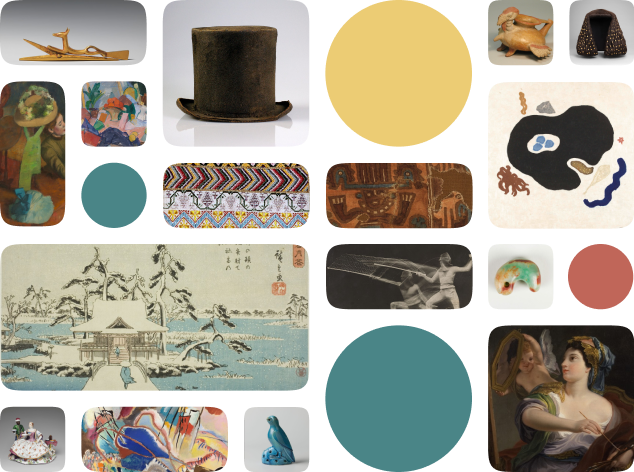Seated female
Creator Name
Cultural Context
Date
Source
About the work
The Halaf were a group of ancient Neolithic farmers who developed a distinctive style of pottery. Female figurines like this one are common at Halaf sites throughout Mesopotamia and Syria, although the culture flourished in the valley of the Khabur River.
This figurine is small enough to fit in the palm of your hand and lacks a head, though other similar figurines have been found with heads that have large, nose-like projections. Its thick thighs, distinctive breasts, and the placement of its hands have led archaeologists to believe that local people associated it with fertility. Hands under breasts was a common pose in fertility figurines from this region for thousands of years.
This figurine is small enough to fit in the palm of your hand and lacks a head, though other similar figurines have been found with heads that have large, nose-like projections. Its thick thighs, distinctive breasts, and the placement of its hands have led archaeologists to believe that local people associated it with fertility. Hands under breasts was a common pose in fertility figurines from this region for thousands of years.
Metropolitan Museum of Art Object Description
Sculpture
Work details
"--" = no data available
Title
Creator
Worktype
Cultural Context
Material
Dimensions
Technique
--
Language
--
Date
Provenance
Style Period
Rights
Inscription
--
Location
Source
Subjects
Topic
Curationist Metadata Contributors
All Works in Curationist’s archives can be reproduced and used freely. How to attribute this Work:
Unknown, Seated female, circa 5600–5000 BCE. Metropolitan Museum of Art. This figurine is small enough to fit in the palm of your hand and its stylization has led archaeologists to believe it was a local fertility figure. Public Domain.
Help us improve this content!
Let our archivists know if you have something to add.
Save this work.
Start an account to add this work to your personal curated collection.
